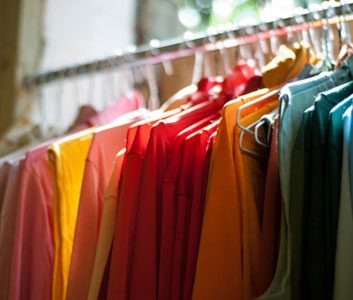Secrets to shopping at thrift stores
Parents and university students, take note: Don’t forget second-hand stores when you’re setting up your living space

Source: Best Health Magazine, September 2014; Photos: Thinkstock
Over the past few years, I have marvelled at the comeback of second-hand stores (queue the Macklemore song ‘Thrift Shop’). A whole new era of hipsters has made scouring the shabby thrift shop oh so chic. And I, for one, couldn’t be happier.
Some of my earliest and fondest childhood memories are thrift shopping with my mom. We were a middle-income family who could afford to buy things new, but my mom loved the thrill of a good thrift-store find, and also appreciated the vintage character of many of the items in these quirky stores. She still regularly goes to what she calls her ‘specialty stores,’ and some of the deals she’s gotten over the years are astonishing: just a few dollars for everything from a brand new food processor to antique furniture appraised at hundreds of dollars.
As fall approaches and students head off to university, what better time for parents and students to embrace a little second-hand savvy? Buying used can save you hundreds of dollars on furniture and items for student digs.
Unfortunately, it can also be time-intensive, so the best way to get the most out of your thrifting efforts is to go prepared. The first order of business is to create a list and decide what you are going to buy second-hand, and what you prefer to buy new (perhaps bedding and towels). Then focus on no-brainers that are almost always in stock at any decent thrift store: household items such as irons, kettles, blenders and even pots and pans, which usually cost no more than a few dollars. Furniture pieces like headboards, tables, side tables and desks are also incredibly discounted when purchased second-hand. The artistically inclined can find inspiration online for sprucing up thrift-store treasures, using Pinterest and DIY blogs such as thriftstoredecorjunky.blogspot.ca or littlegreennotebook.blogspot.ca.
Once you have a good sense of what items you want to purchase, start your research on the thrift stores in your area. Yelp.ca is a great resource; depending on where you live, you may find an online ranking of the best thrift stores in your city. For instance, Vancouver and Toronto have had their top thrift stores ranked by Scout magazine and Toronto Life, respectively.
Personally, I like to focus on thrift stores I can walk to. I try to get to know their product cycle and have spent time becoming friendly with the staff. In fact, they now know me so well that if I am looking for something they don’t have, they keep me on a list and call me if it comes in. Getting to know your neighbourhood thrift shop can also benefit you if they have discount days; for example, many stores now have ‘half-price Wednesdays.’
Other random tips: Some people take along hand sanitizer, and I dress in comfortable clothes like leggings so that I am able to try most things on quickly without waiting in the change-room line.
On all matters related to shopping, I have to say that thrift-store sleuthing can be most gratifying, and not just because of the financial and environmental savings. Whenever I look at the second-hand purchases that I have painted, fixed up or refurbished to give a new life, I feel incredibly proud.
This article was originally titled "Thrifty finds" in the September 2014 issue of Best Health. Subscribe today to get the full Best Health experience’and never miss an issue!




